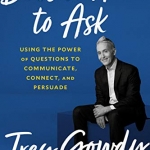Think Like a Buyer in Your Blog
We’ve heard it before, but as blog content writers, we need to hear it again and again. It’s not about us or our clients – it’s about the buyers…
“When you’re selling a business, think like a buyer”, advised Keith Rand. At a recent meeting of our Circle Business Network group, Rand, who along with his son, specializes in making business transfers happen, quoted from two books: Men Are From Mars; Women Are From Venus and Think Like a Man. The common message, Rand explained, is this: achieving success in business means understanding – and focusing the conversation on – not what you have to offer, but what the other party is seeking.
Financial advisor David Nienaber, CPA, CFP® tells business owners to consider three things “as you plan for your next chapter”, including identifying a professional team to effect the transfer, establishing tax consequences and future cash flow, and judging the ramifications of a sale for family members.
While Keith Rand would agree that sellers must carefully weigh all those factors prior to entering into a sale, his point is that during the negotiations themselves, the focus needs to be not on why the seller has decided to sell, but on what on what’s going on inside the buyer’s head as he or she pictures owning and running the business going forward.
In fact, a “selling” mindset can actually hurt your marketing strategy, Liz O’Neill of Precision Marketing Group agrees. Many entrepreneurs and small business owners are stuck in the seling mindset, so caught up in their brand or industry, they forget that clients are indifferent to all that.
Your thinking is centered around who you are and what you do. Meanwhile, the buyer starts with a problem that needs solving. In other words, O’Neill explains, when crafting content for your web pages, “you need to divorce yourself from in-house terms, and begin to speak broadly,” not about precise offerings and skills you have.
In blogging for business, as business coach and Say It For You guest blogger Andrew Valley suggests, “Don’t tell them what you do. Tell them what you do for them.” In fact, Valley says, “most people are interested in what you do only if it fits with what they need or want.”






Follow us online!